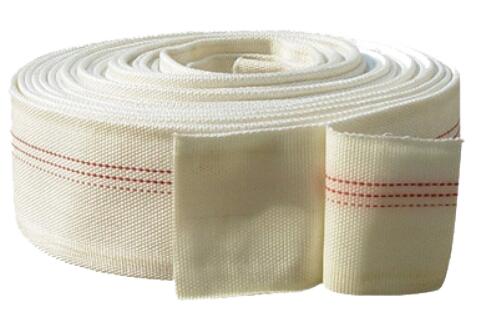The fire hose is a hose for water delivery at the fire station. According to the material, it can be divided into a lined fire hose and an unlined fire hose. The unlined fire hose has low pressure resistance, large resistance, easy water leakage, easy to mold, short life, suitable for laying in the fire field of the building; the lining water belt is resistant to high pressure, wear and mildew, and is resistant to mildew. Durable, not easy to leak, low resistance, can also be bent and folded freely, free to move, easy to use, suitable for external fire laying and fire trucks.

As a professional fire hose manufacturer, I would like to remind everyone to pay attention to the following points:
1. Avoid excessive twists and turns during laying to prevent the ability to reduce water pressure resistance; also avoid twisting to prevent the water belt from rotating after the water is filled and the inner button hose interface is disengaged.
2. After filling the water, avoid forcibly dragging on the ground. When changing the position, try to lift the movement as much as possible to reduce the wear of the water belt and the ground.
3. Avoid contact with corrosive chemicals such as oils, acids, and alkalis.
4. In areas where there may be flames or strong radiant heat, a cotton or hemp water hose should be used.
5. After use, it should be cleaned. The unlined water belt should be hanged. After drying, the coils should be stored in a cool and dry place.
6. If any broken holes are found during use, wrap the water with a cloth wrap and daring or sticking as soon as possible; when there is obvious damage, you should immediately withdraw from combat preparation.
7. When the vehicle needs to pass the water belt in the laying, the water bridge should be placed in the passing part beforehand.
8. If you need to pass the railway when laying, you should pass under the rail.
9. A lining hose should be used outside the building in cold areas to prevent the hose from freezing.
 I hope that everyone can make good use of the fire hose to protect the safety of life and property.
I hope that everyone can make good use of the fire hose to protect the safety of life and property.





